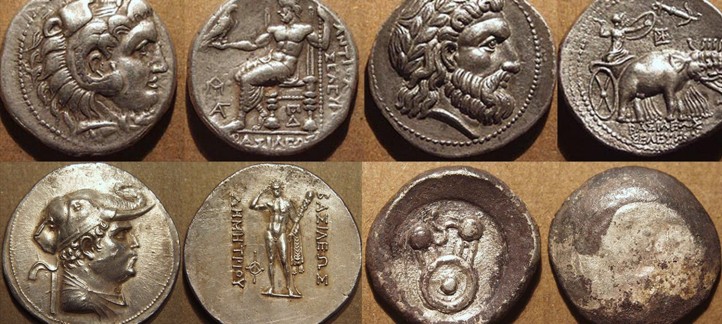
Ancient coins, pieces of metal embossed with designs and inscriptions are our windows to a lost world of ancient kingdoms and adventurous traders. Coins indicate economic power, political might, old connections and a lot more. They oat, travel and circulate across geographies and stand the test of time, thus playing a crucial role in our understanding of the past.
In his book titled Coins, late Prof. P. L. Gupta, an eminent numismatics expert, explains how currency evolved. ‘When people settled in localities and communities grew in size, the exchange of different products became a necessity. A common commodity was fixed as an intermediary in all transactions. The need for having a uniform measure eventually led to the use of metal for minting coins.’
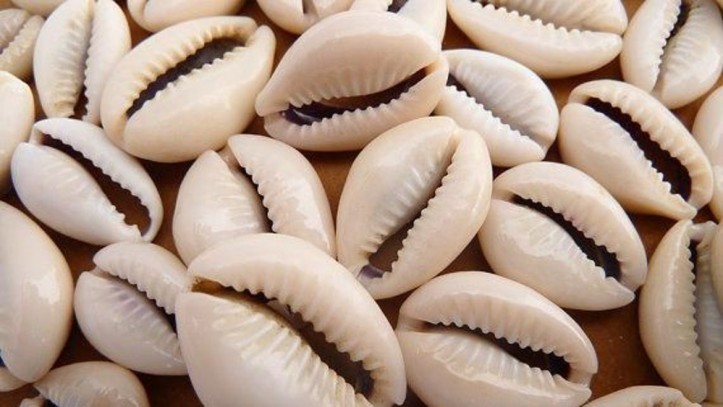
Before the 6th century BCE, cowrie shells, barter of agricultural produce and animals were used for trade
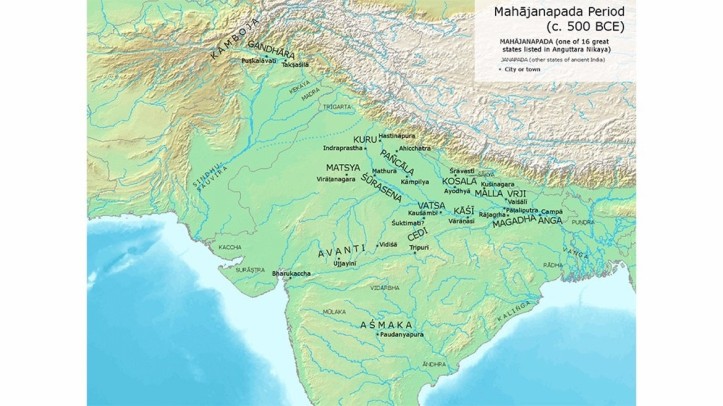
With the formation of Janapadas (kingdoms) and Mahajanapadas (oligarchic republics) in Northern and Central India during the 6th century BCE, the earliest coins in India- the punch-marked coins came into existence. The rise of coins as currency was a result of a period of intense urban development and with it, trade. This created a need for a tradable commodity which was durable and could be universally accepted.
The existence of Indian punch-marked coins first came to light when a huge hoard of coins was discovered at the Bhir mound in Taxila in today’s Pakistan in 1924. In all, there were as many as 1055 punchmarked coins that were found here. Several such discoveries, have been made across northern India, since then.
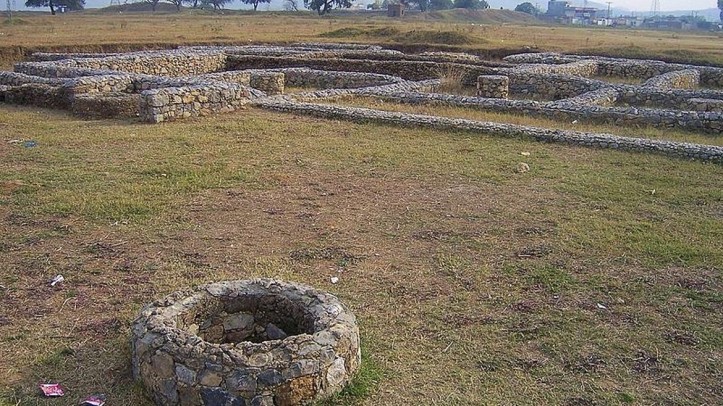
Interestingly. coins were initially issued not by kings, but by traders and merchant guilds of different Janapadas or Republics . This is a clear indication of the inuence that merchants enjoyed in society at the time. The coins they minted were used exclusively for trade.

The coins of the period stand out because they had some common features. They were stamped with different symbols only on one side, while the other side was left blank. The symbols on the coins included a cross section of geometric forms, animals and plant motifs and human figurines. The symbols on these coins give us an insight into what life
was like, in that period.
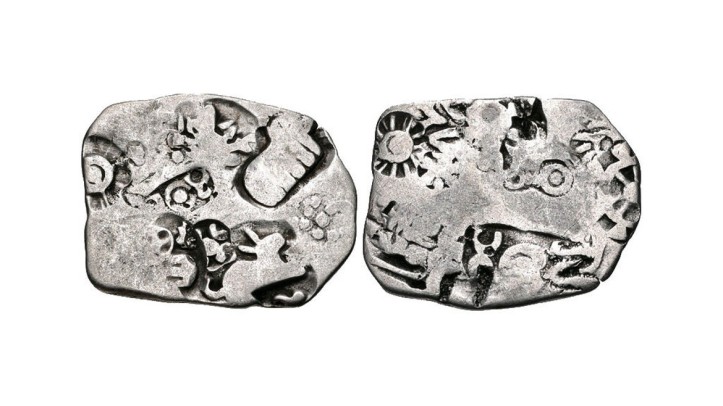
It is interesting to note that these coins don’t have any sort of writing on them. This is because the coins existed before any writing system was developed in India. The coins of the 16 Janapadas varied, having one to four symbols. For example the coins of Kuntala and the Kuru(s) had only one symbol. However, coins of some Janapadas like Gandhara had one symbol but were punched twice.
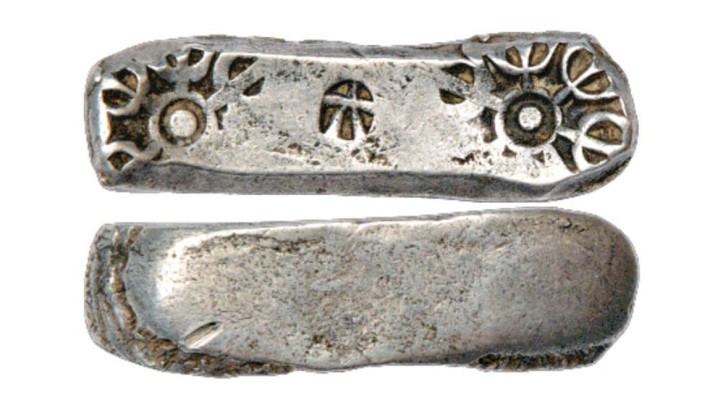
The coins with the standardized five symbols and weighing 3.4 grams, found in abundance throughout the country were first issued by the Magadha Janapada. Gradually, as the Mauryan Empire of Magadha expanded and annexed the different areas, they imposed their own version of the coins across the empire.
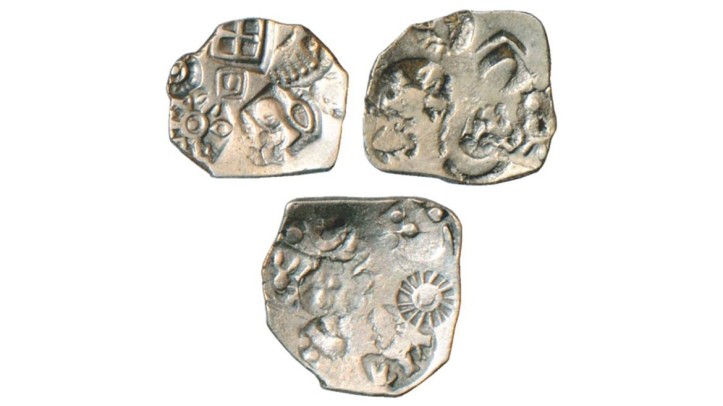
What is truly amazing is that the use of metal currency started around the same time, across the known world. Apart from India, metal coins were being used in the Kingdom of Lydia (today’s Turkey) and China under the Qin dynasty. However, the coins do not bear any resemblance to each other.

